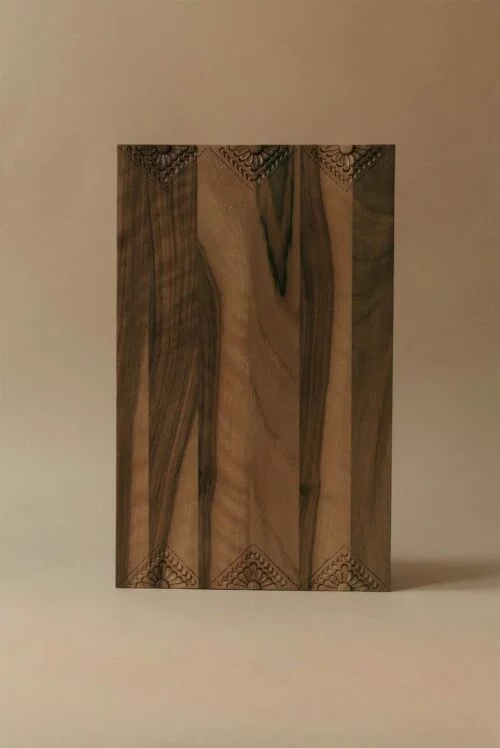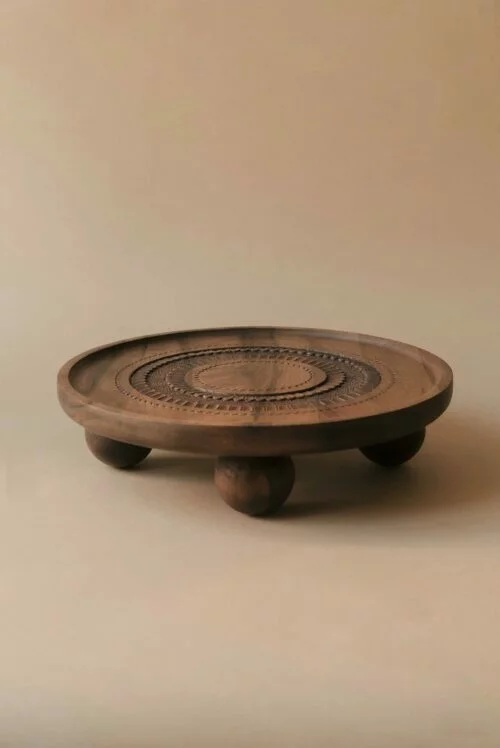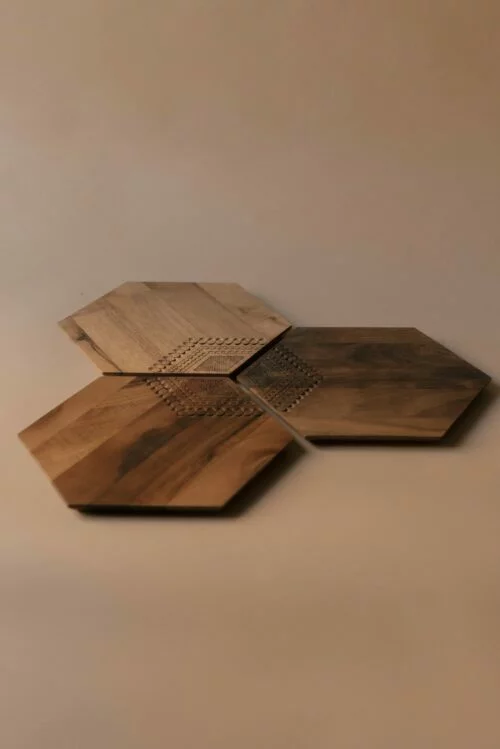Behind the Timeless Artistry: Konjic Woodcarving Patterns
The patterns of Konjic woodcarving are not just part of the craft, but a testament to the rich history and traditions of Bosnia and Herzegovina. These beautiful designs have been passed down for generations, with each stroke and curve carrying the spirit of the artisans who came before.
Carving the Soul of the Artisan
One of the most fascinating aspects of Konjic woodcarving is the symbolism woven into each design. These patterns reveal the artisans’ soul, their creativity and the rich culture they come from.
The journey of symbolism begins with the wood itself. Just as the carvings are delicate and unique, so is the wood that holds them. Based on the symbolism and durability it carries, artisans carefully choose the wood that will decorate their vision, in our case often maple or walnut.
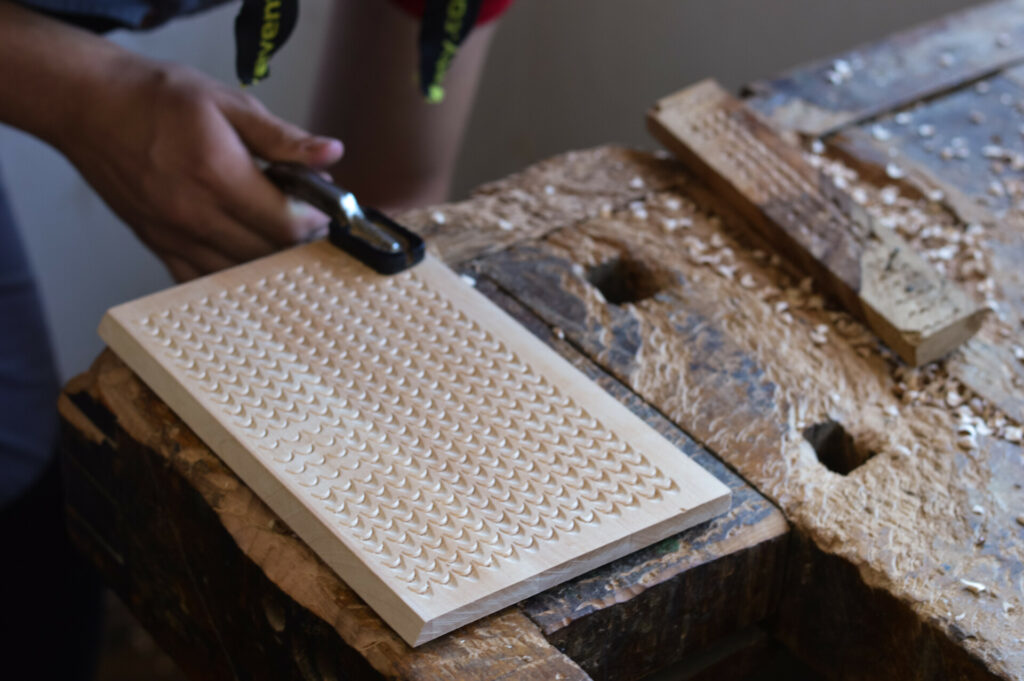
The tools themselves are created specifically for this purpose and represent the heritage of the craft. Each chisel and gouge is lovingly handcrafted and passed down through generations to come, holding the rich legacy of the craft. These careful choices set Konjic woodcarving craft apart, creating the base for the artwork that is to come.
But the true magic lies in the hands of the artisans. As they carve the patterns, they infuse each piece with their time, heart and soul, often staying hours or days on task to bring one piece to perfection.
The Patterns with the Craft
Each pattern embodies the surroundings and influences of the artisans who make this craft. From the geometric designs symbolic of Islamic art to the nature and floral motifs of Konjic’s lush landscapes, every motif has its own significance.
Symbol of Konjic Woodcarving: The Reshma Pattern
One of the most iconic and recognisable patterns in Konjic woodcarving is the Reshma pattern. Reshma, which in Bosnian means decoration in the form of threaded pearls, is an intricate design with winding curves and delicate details.
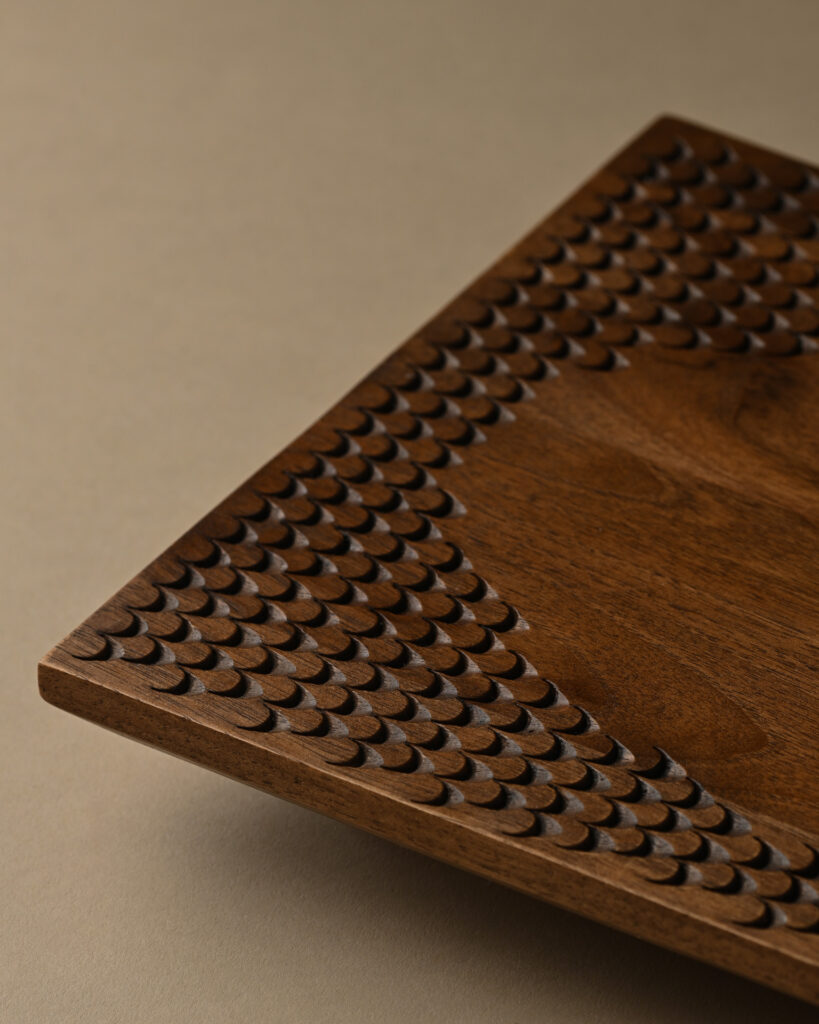
It is a testament to the artisans’ expertise, their ability to transform a simple piece of wood into a mesmerizing work of art. The Reshma pattern is often used as a central, and very tactile feature in woodcarvings, making it a focal point that commands attention.
The Reshma pattern holds cultural significance in the region. It is believed that the intricate curves and motifs in the Reshma pattern symbolize unity and harmony within the community.
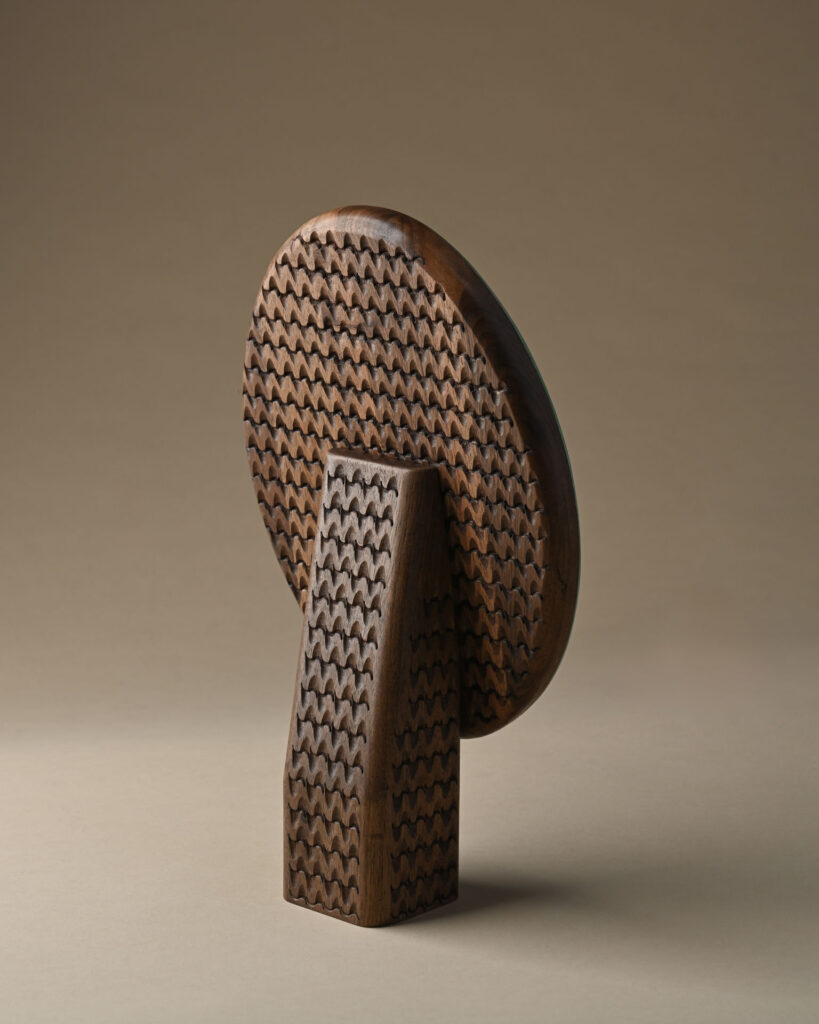
Each curve and swirl in the design is thought to represent the interconnectedness of individuals and the importance of working together towards a common goal.
Nature-Inspired Patterns: The Konjic Rose
Throughout the years, the artisans of Konjic found endless inspiration in the lush natural landscape surrounding them. Delicate floral designs are found throughout archival pieces and contemporary ones.
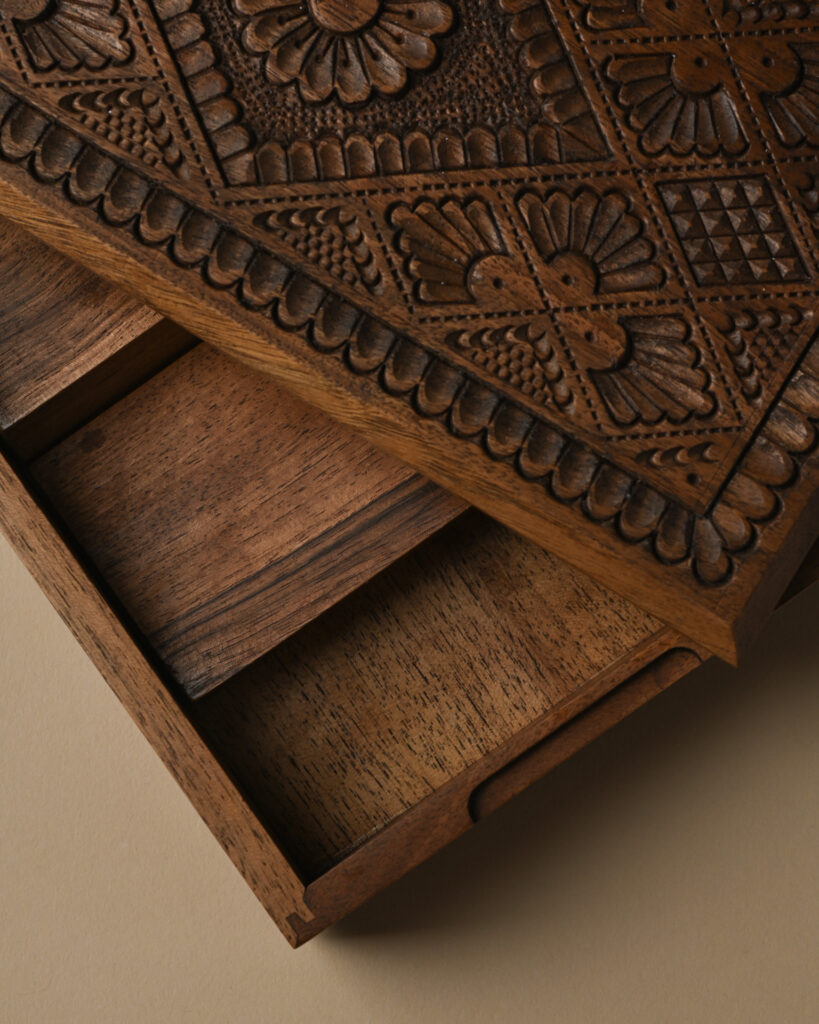
One of the most iconic floral motifs used by the artisans of Konjic is the traditional Konjic rose. The queen of flowers symbolizes purity, beauty, and the rich cultural heritage of Bosnia and Herzegovina. Its intricate petals and graceful curves are carefully carved into the wood, creating a sense of timeless elegance and sophistication in the artwork.
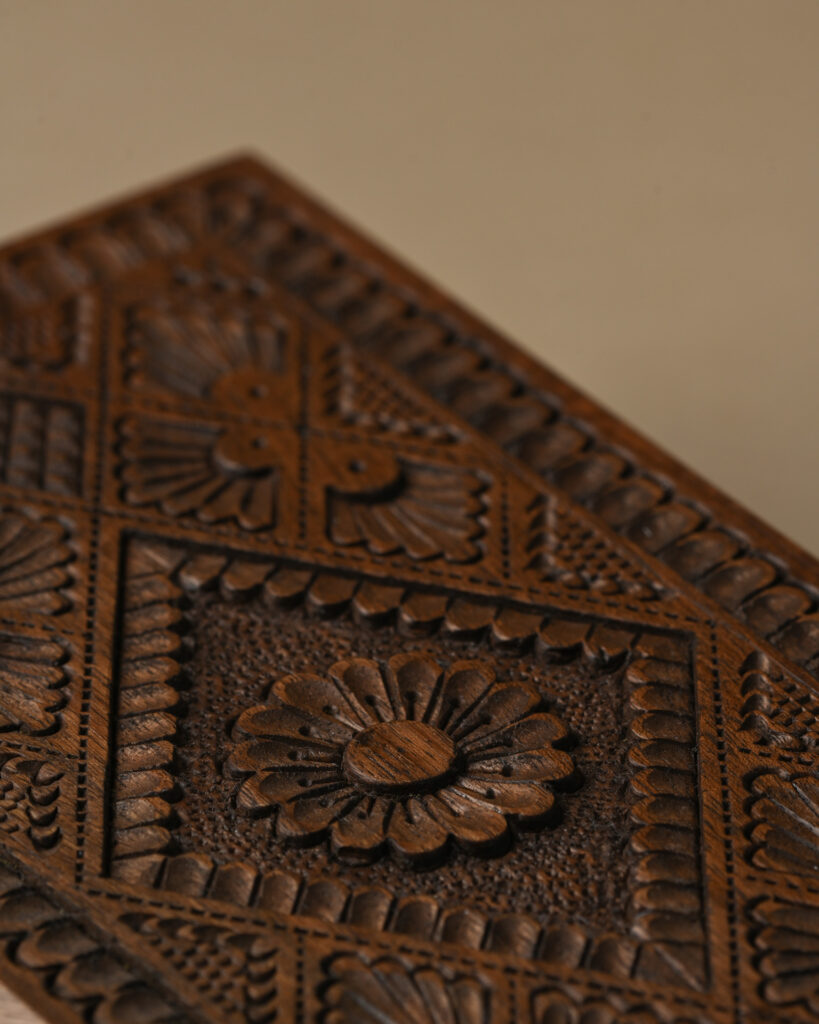
Each woodcarving becomes a tribute to the beauty of the natural world, inviting viewers to pause and appreciate the intricate harmony between human craftsmanship and Mother Nature’s creations.
Influence of Islamic Art: Geometric Patterns
One of the most striking aspects of Konjic woodcarving craft is the incredible precision and intricacy of the geometric patterns, influenced by Islamic art. The repetition of shapes and lines creates a hypnotic effect, drawing the viewer into a mesmerizing world of interlocking forms.
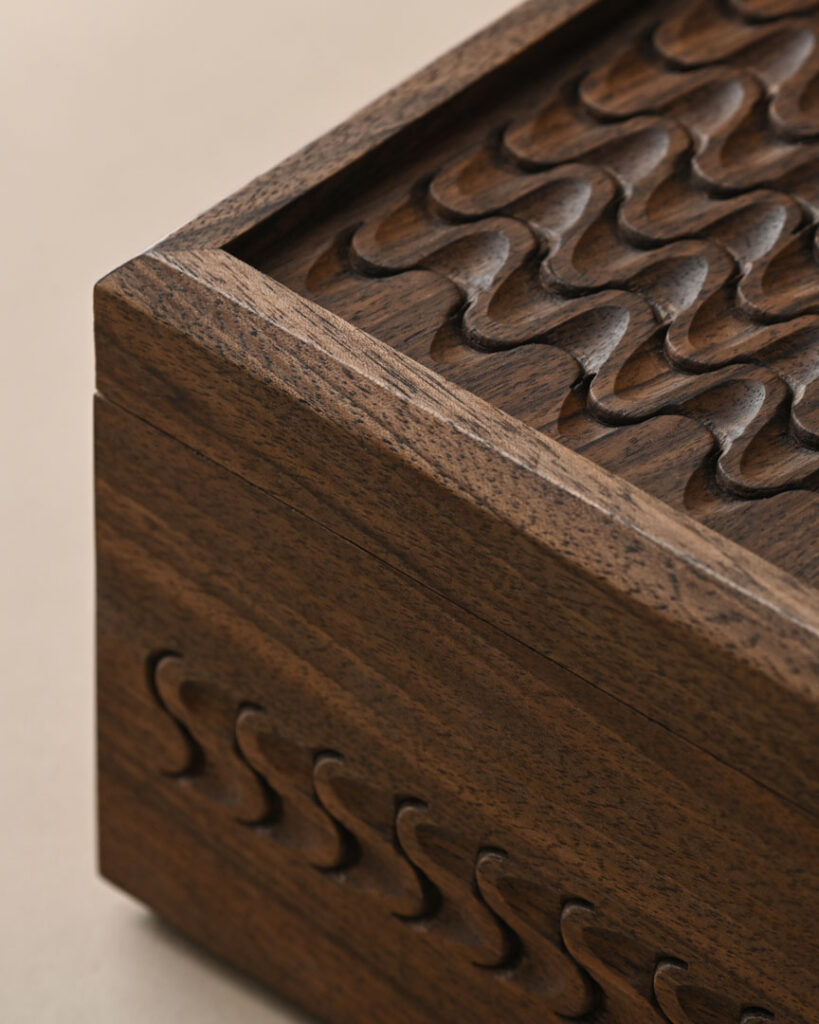
The artisans’ steady hands and keen eyes carefully carve each line, resulting in a sense of rhythm and symmetry.
In Konjic woodcarving, these patterns are more than mere decoration; they are an embodiment of a philosophical and spiritual aesthetic that invites contemplation and reverence.
The Meaning of Patterns for Slađana
For Slađana, one of our artisans, the patterns of Konjic woodcarving go beyond artistic expressions: “For me, these patterns represent the cultural fabric of Bosnia and Herzegovina. Each curve and line is a narrative thread connecting the present to the past, an enduring symbol of resilience and identity of the people who have been here for centuries.”

In her view, the Reshma pattern is the most beautiful: “Simply because it shows the community’s intertwined relationships and mutual support, reflecting how everyone is connected and dependent on one another. “
The floral motifs remind her of her childhood growing up and the Bosnian love for nature that was present. She highlights it’s an essential relationship with the natural world, helping her stay both nurturing and reflective of the country’s landscapes.
She continues: “Through these patterns, I find personal and collective identity, seeing them as a legacy that connects my modern life with the historical depth of my culture. They are for me, a source of pride and a constant reminder of my heritage’s uniqueness and beauty.”
